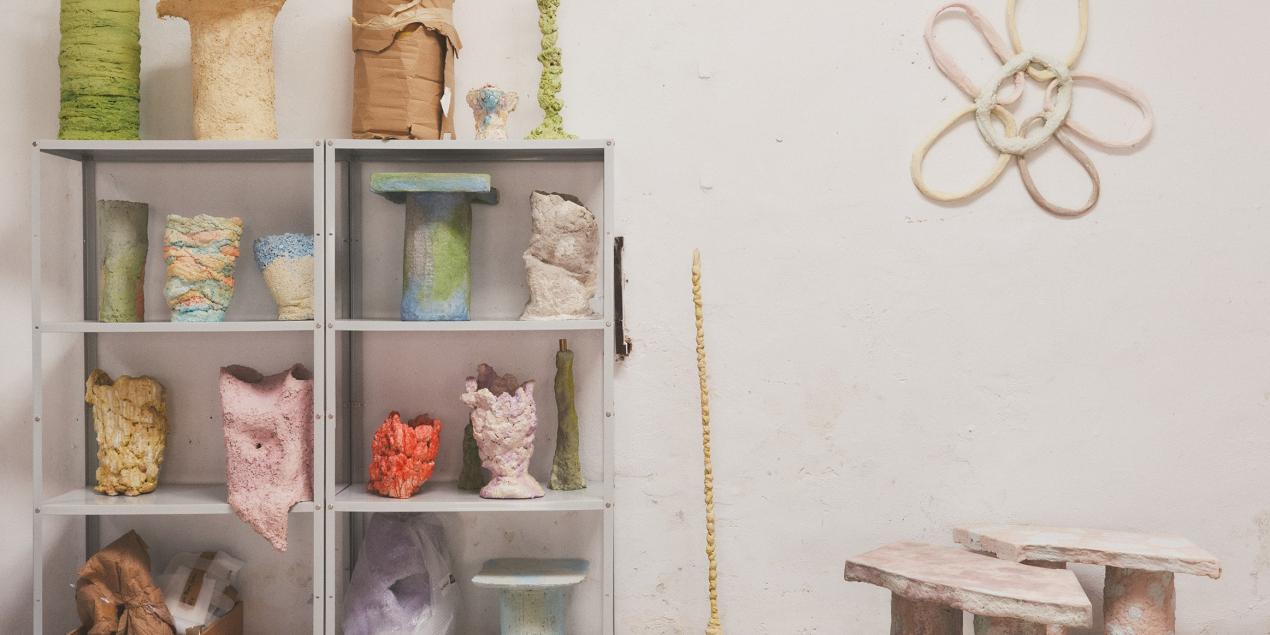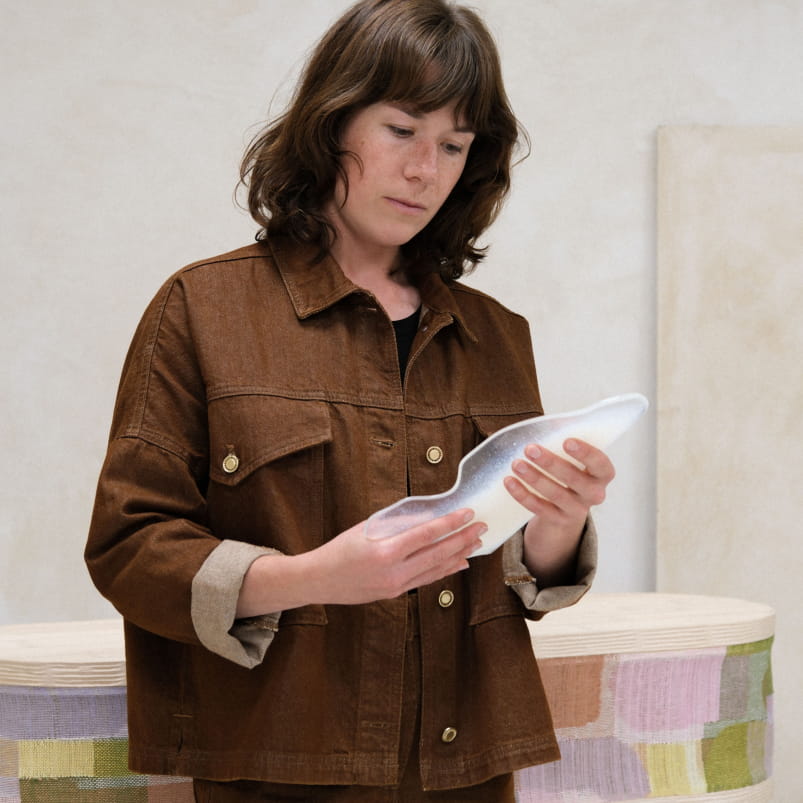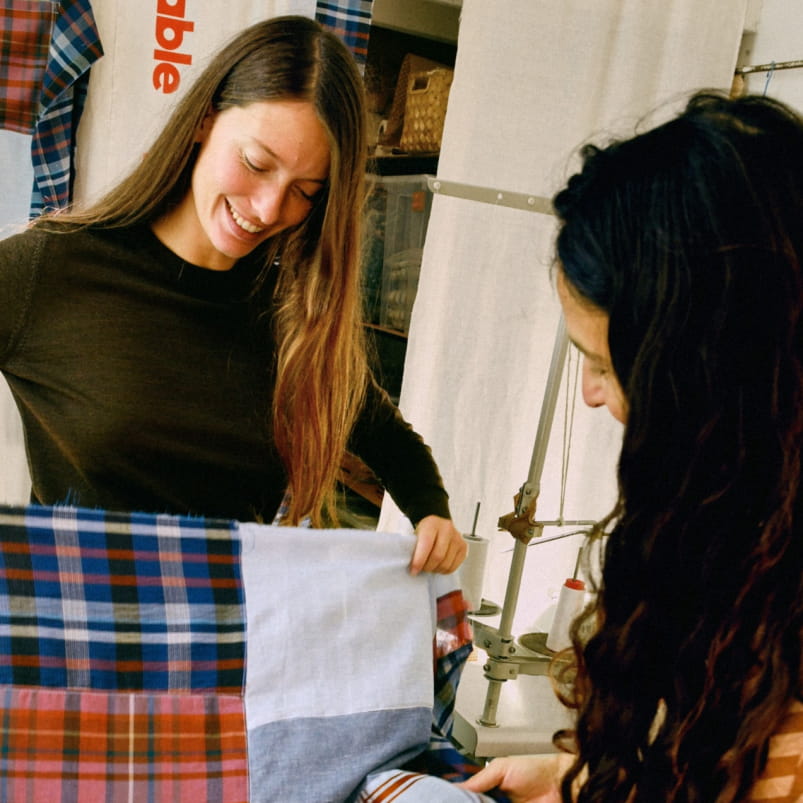PHOTO CREDIT : Andrea Illan
Sara Regal, a designer specialising in sustainable practices, is known for her innovative approach to design. After completing a master's degree at the ECAL and an artistic residency in Hong Kong, she moved to Mallorca, where she is exploring new practices by working with discarded materials. For the new Paris flagship at 11 rue Bachaumont, she has created a series of pieces (‘pièce 6, pièce 9, pièce 13’) using wood and cork fibres from insulation waste. These unique creations, combining traditional materials and organic pigments, reflect her commitment to ethical and experimental design. Meet a visionary artist.
Could you introduce yourself and tell us a little bit about your background?
My name is Sara Regal and I am a designer specialising in material research and sustainable practices, focusing on spaces and objects. After a master's degree from ECAL in Switzerland and completing an artistic residency at HKDI in Hong Kong, I began working as an interior and set designer for a Spanish brand while setting my independent practice. In recent years, I have established my atelier in Mallorca, where I experiment with waste materials for their application in spaces and objects.
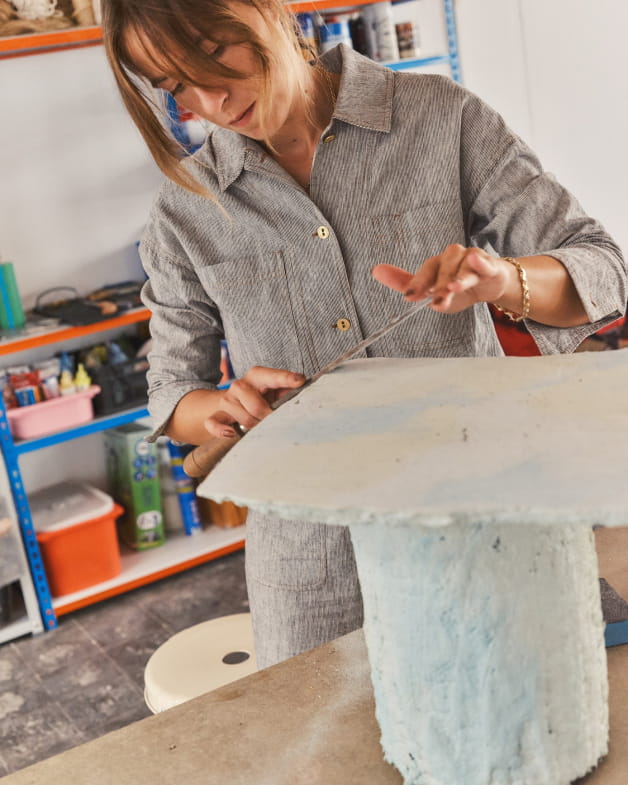
How did these experiences influence your approach to design and materials?
As a designer I have developed an intuitive and experimental approach to material qualities and production, with a strong influence on color trends and art direction. My work bridges industrial and artisanal techniques, as well as synthetic and natural materials, with the environment as a central focus.

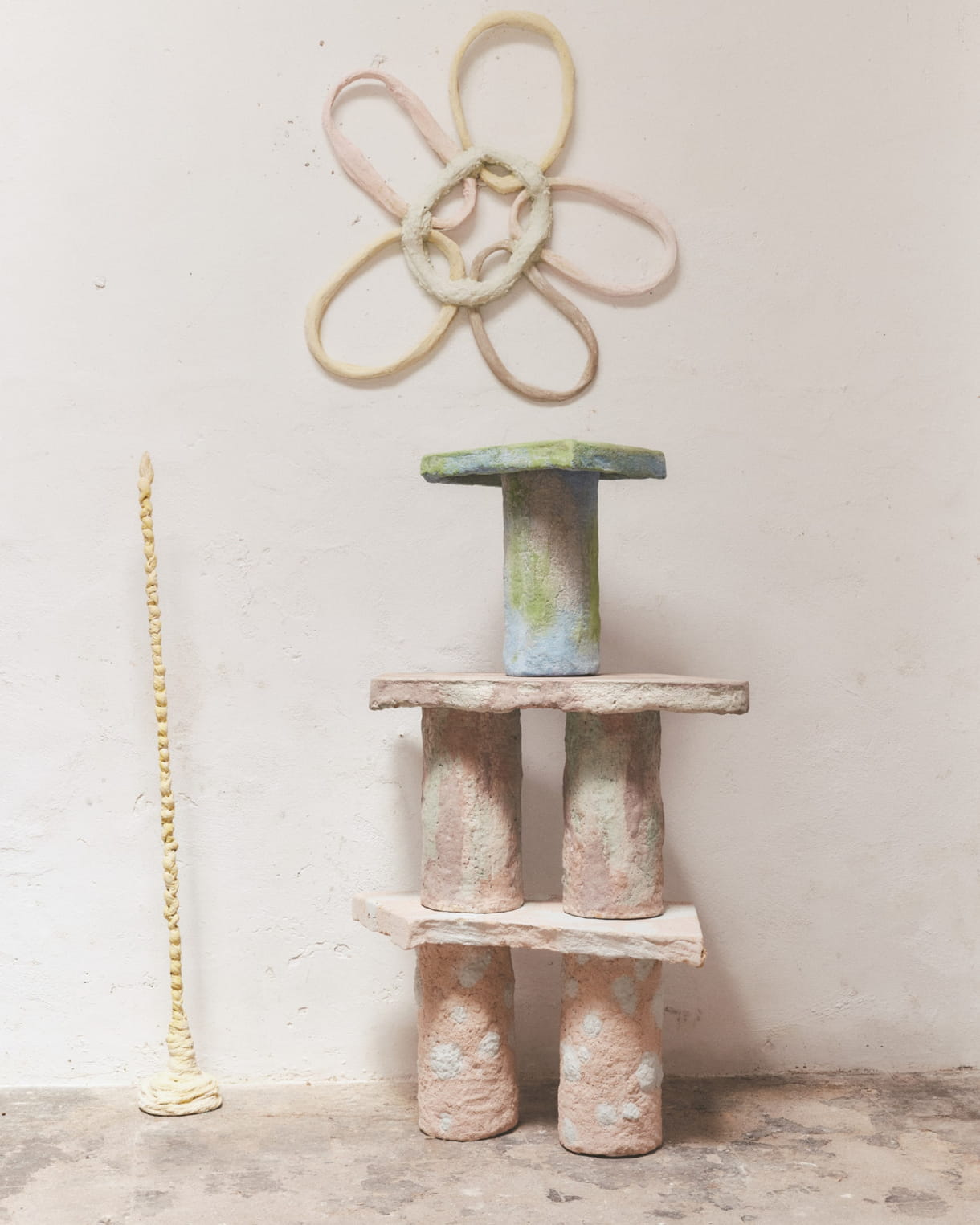
Which materials are you particularly fond of?
Any kind of waste material.
What are your sources of inspiration? Are there any artists or artistic movements that have a particular influence on your work?
I am inspired by the materials, their texture and the possibilities that can be projected when you get to know them. The processes, and the variables and mistakes that arise are constant sources of inspiration, as they make you consider alternatives. Some of my inspirational artist are: Anita Molinero, Justo Gallego, Gaetano pesce, Lina Bo Bardi, Ken Price, Isamu Nogguchi & Georgia O'Keeffe
How do you integrate sustainable and ethical practices into your work?
Sustainable and ethical practices are at the core of my work. I often begin with waste materials as my starting point, aiming to transform them into something new while minimizing environmental impact. My goal is to produce each piece in the most sustainable way possible, striving for a circular approach.
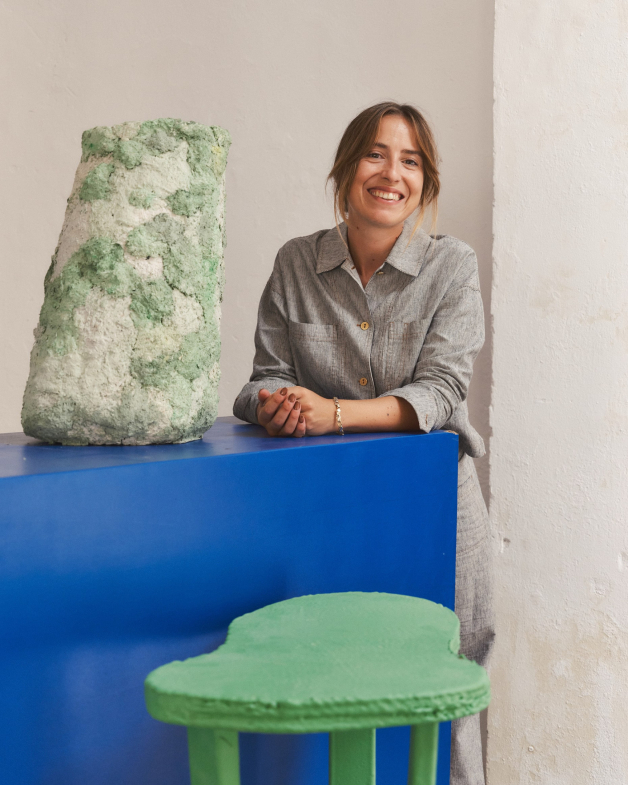
You have an intuitive, experimental approach to materials. Can you tell us how you go about researching the quality of materials, natural or synthetic?
I usually begin my research with a preliminary understanding of the technical qualities and standard production methods of the materials, whether natural or synthetic. I start by conducting analytical tests to see how these materials can be manipulated with the tools and resources at my disposal. These tests are often mechanical, but they can also involve experimenting with other processes or materials. During this phase, unexpected reactions frequently occur, which inspire new ways to manipulate the material. It's a chain reaction—once I discover a combination that works, I continue to experiment with it, even after achieving a certain volume or form.
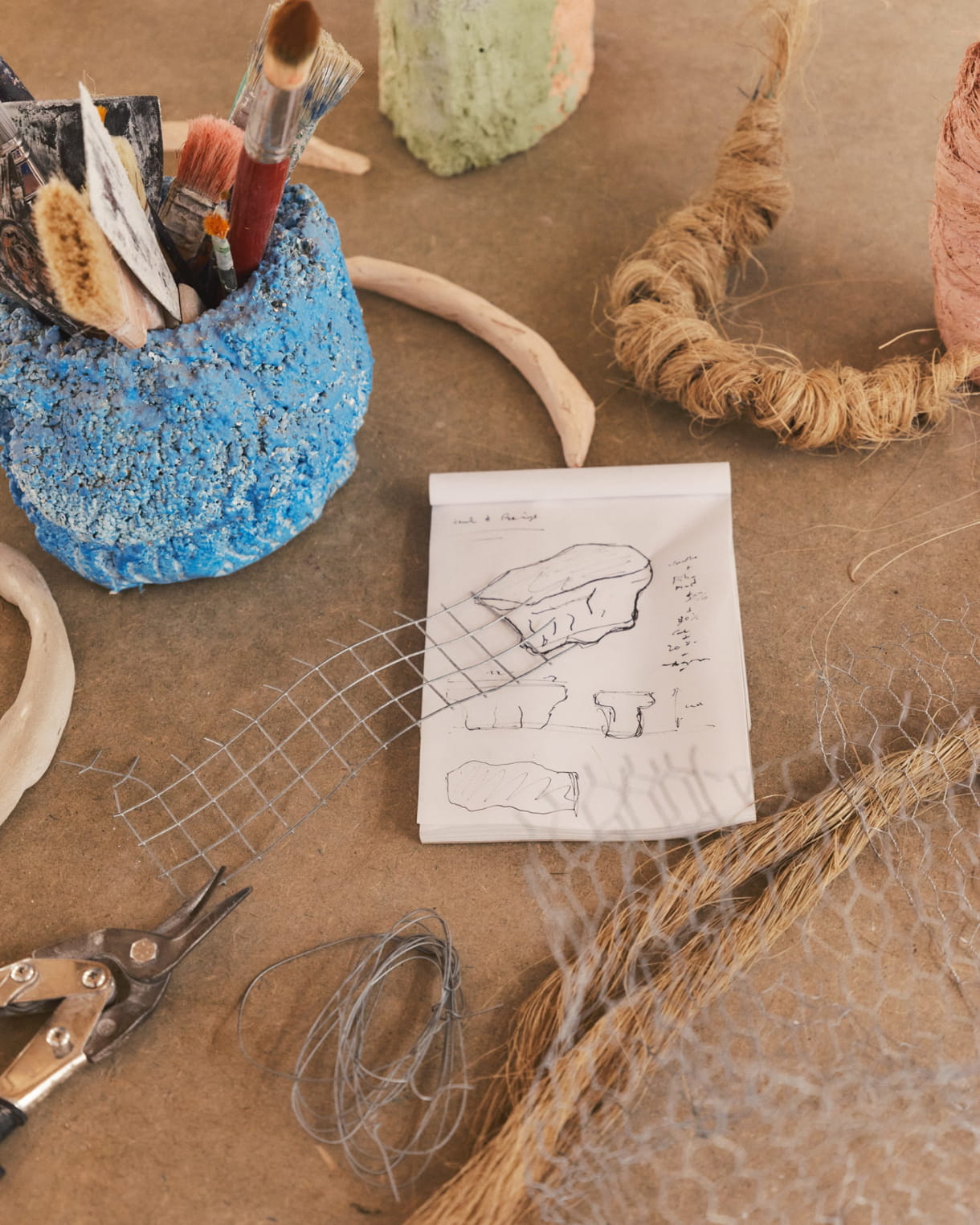

For the new Paris flagship store, you designed pieza 6, pieza 9, pieza 10 y pìeza 13, can you talk to us about this creation and describe the creative process, from initial idea to final realization?
The Sessùn pieces are part of a series centered on experimentation with construction waste. These pieces are crafted from insulation waste, specifically wood fiber and cork. I created an amalgam by mixing these materials with their usual building counterparts, such as lime and sand, and added organic pigments for color. Each piece is an experiment in its own right, as I explored different techniques for each one. In some, I modified the process of material application, while in others, I focused on the finishing or polishing methods.
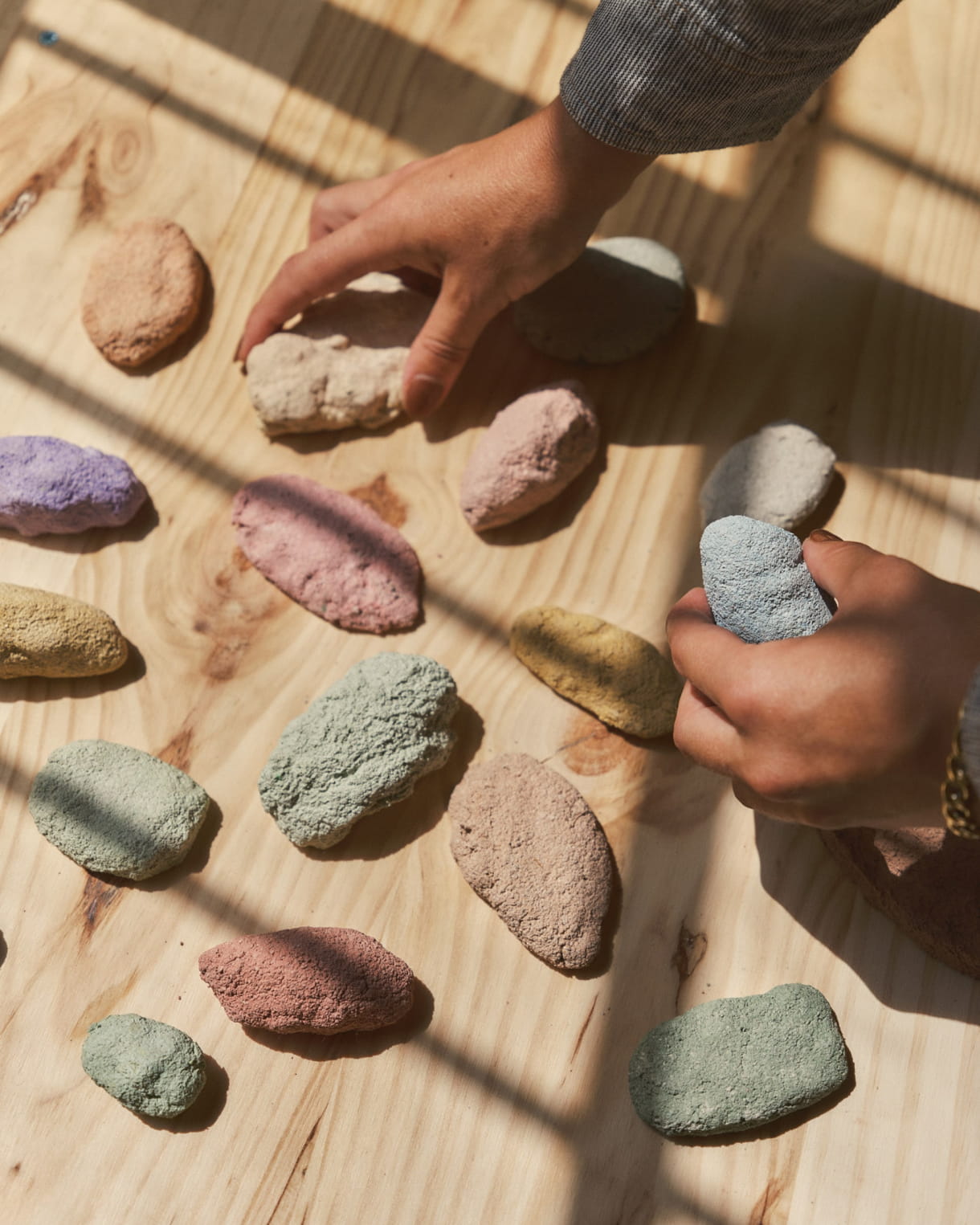
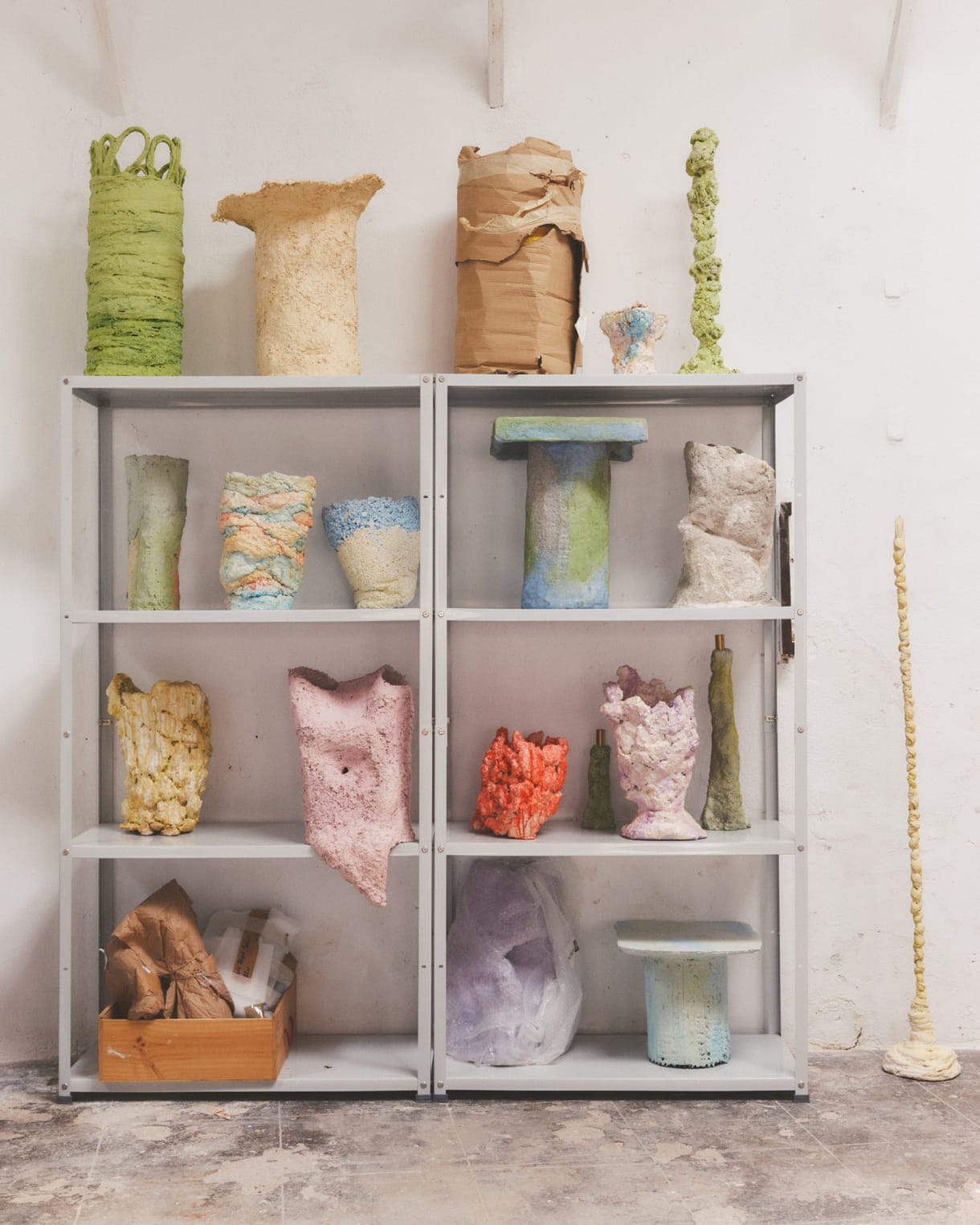
We worked closely with Cobalto Studio on this project. Had you worked with them before?
I've always admired Cobalto's work, but this was my first time collaborating with them and I'm really glad they chose some of my pieces to be part of their beautiful design.
What type of craftmanship did you use and how many hours of work did it take to create the artwork for the boutique?
The process is entirely handmade. The waste material is torn apart by hand and mixed with other components to create a paste.The volumes are built up gradually by adding layers to increase thickness and incorporate color. The drying process takes a few weeks, after which the pieces are sanded and sometimes polished using different tools and methods. Finally, the piece is protected with an ecological varnish. It's difficult to quantify the exact time, but the production of each piece takes around six weeks.
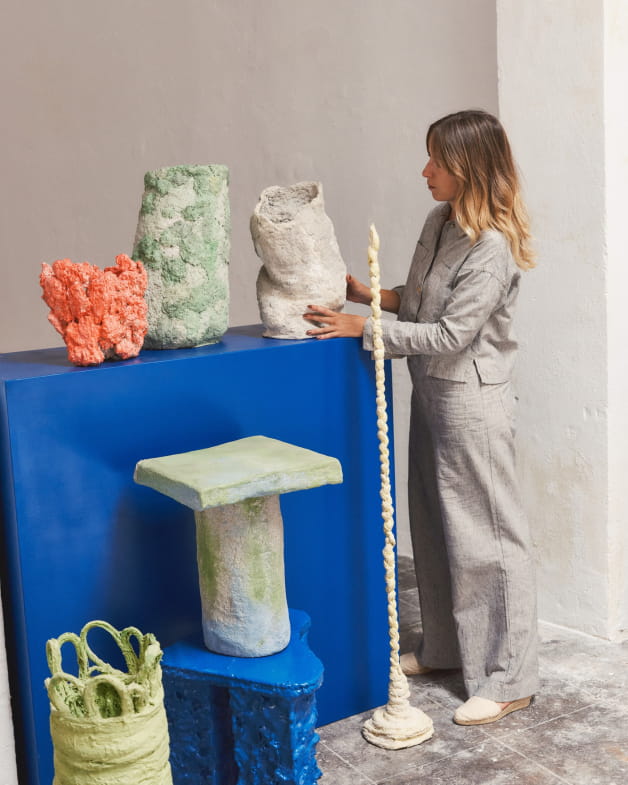
What does Sessùn mean to you?
Represents a commitment to quality and made to last in fashion, which I believe is something often missing in the industry today. In a time when fashion trends change rapidly and garments are often made with a short lifespan in mind, the brand stands out by creating pieces designed to last.
FIND OUT MORE ABOUT SARA REGAL'S LOOKS

